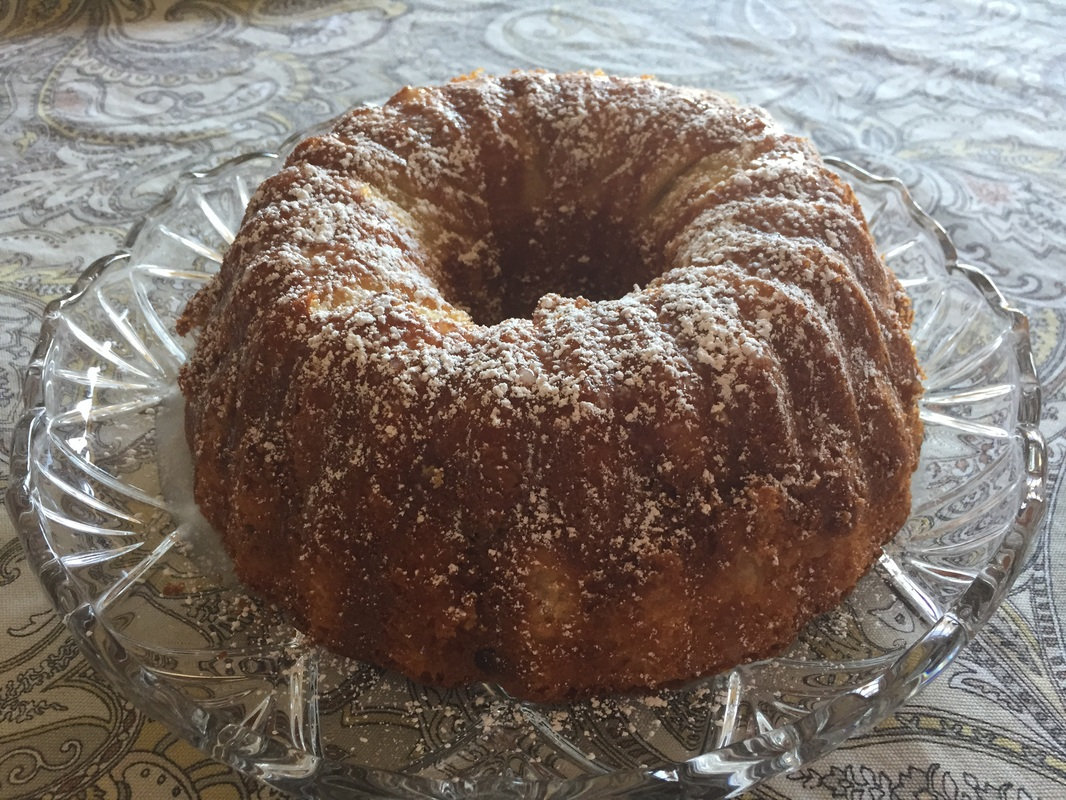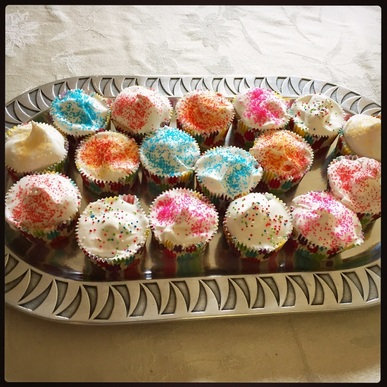Banana Tea Bread
Monday, February 16, 2015 | By: Becky Diamond
Naturally sweet and rich tasting, bananas are one of the least expensive and most widely consumed of all fruits in America today. They are so popular and ubiquitous that it is hard to imagine a time when they weren't as available. The tropical treat was occasionally shipped from the Caribbean to port cities such as Philadelphia as early as the eighteenth century, but it wasn't until the 1880s that they were widely introduced throughout the U.S., when innovations such as the railroad, steamships and refrigeration methods made it easier to transport them over greater distances without spoiling.
Soon after, recipes using the tasty fruit began popping up in cookbooks and magazines, although some might seem a little different than we're used to today. For example, a 1889 Good Housekeeping article lists recipes for banana sponge (a fluffy pudding made with gelatin), three different types of "banana jelly" (molded gelatin desserts), banana fritters (banana mixed with egg, milk and flour and then fried), fried bananas (sliced, battered and fried) and banana salad (bananas mixed with oranges and a squeeze of lemon juice, then sprinkled with powered sugar). Other popular preparations included banana pudding, pie, ice cream, cake and candy.
In another cookbook published the same year (The Steward's Handbook and Guide to Party Catering), Chef Jessup Whitehead described bananas as "among the very best of fruit." To serve simply as the whole fruit, he recommended cutting the ends off, wiping them with a cloth and placing them on stands in their skins. These "stands" he is referring to are special footed glass serving bowls, called banana bowls or boats, a fashionable Victorian dish used to elegantly cradle a bunch of bananas.
Today moist, sweet banana bread is a common way to utilize bananas, particularly those that are perhaps getting a little too ripe to eat. However, recipes for banana bread as we know it today did not show up until the twentieth century. The first mentions of banana bread in nineteenth century cookbooks were not really bread at all, rather baked banana shaped into little loaves, the way it was made in the West Indies. The ripe fruit was squeezed through a sieve and formed into loaves, wrapped in leaves and then dried in the sun or baked on hot ashes. This was commonly taken on long sea voyages. The natural starches in the banana held together to produce a product similar to a yeasty flour bread. Plantains were also used in the same way. The fruit's starchiness also was used to make a flour. Unripe bananas were dried in the sun and then made into flour which was used to make a sweet bread that was said to be "excellent and very nutritious," according to a 1894 issue of Chambers's Journal.
Chemical leavening has been used since the nineteenth century to make baked goods rise more quickly. The earliest was in the form of pearl ash, and then later in the century baking powder, soda and cream of tartar were introduced. At first these were most often used for cakes and biscuits, but later they were incorporated into "quick" breads and muffins, which really gained in popularity in the 1940s as "tea breads."As per James Beard, these "gooey sweetened breads" were often served in place of rolls with lunch or dinner. I decided to try one of the early recipes, taken from a pristine copy of The Lily Wallace New American Cookbook (1949) given to me by my thoughtful neighbor. The cookbook was edited by Lily Haxworth Wallace, who was a home economics writer, lecturer and instructor of the Household Arts Department at The Ballard School in New York City. The book was apparently sponsored and presented by the Home Service Bureau of The American Stores Company in Philadelphia.
The recipe is simple, straightforward and very delicious. It is slightly different from quick bread recipes today in that it calls for shortening (I used butter) instead of vegetable oil, and it also says to sift the dry ingredients three times (no doubt to give it a lighter texture). I went ahead and followed these instructions and was well rewarded with the results. Give it a try next time you have a few extra bananas ripening on the counter.
Banana Tea Bread
- 1 3/4 cups sifted flour
- 3/4 teaspoon soda
- 1 1/4 teaspoons cream of tartar
- 1/2 teaspoon salt
- 1/3 cup shortening
- 2/3 cup sugar
- 2 eggs, well beaten
- 1 cup mashed banana
Sift flour, soda, cream of tartar, and salt together three times. Rub shortening to a creamy consistency with the back of a spoon. Stir in the sugar, a few tablespoons at a time, and continue beating until light and fluffy. Add eggs and beat well. Add flour mixture alternately with banana, a small amount at a time. Beat after each addition until smooth. Pour into a well greased loaf pan and bake in a moderate oven (350F) about 1 hour.
Sources: The Complete Cook: Plain and Practical Directions for Cooking and Housekeeping with Upwards of Seven Hundred Receipts; The Oxford Companion to American Food and Drink, Chambers's Journal, Volume 71, (1894); Savory Suppers & Fashionable Feasts by Susan Williams; American Cookery by James Beard; The Lily Wallace New American Cookbook






Leave a comment
0 Comments